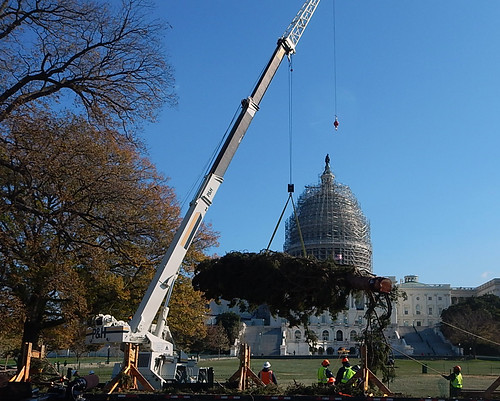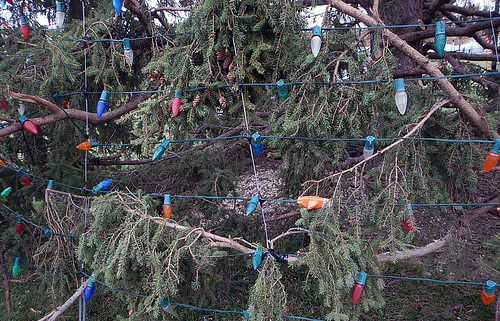
After a 2,700-mile, 30-stop journey from Minnesota, the 88-foot white spruce tree harvested from the Chippewa National Forest is delivered, set up in Washington, D.C., decorated by Architect of the Capitol employees and ready for the 2014 U.S. Capitol Christmas Tree lighting ceremony at 5 p.m. Tuesday, Dec. 2.
Speaker of the House John Boehner will light the tree on the Capitol's West Front, where it will remain lit from dusk until 11 p.m. daily through Jan. 1. The tree is a gift from the American people, hence the moniker “The People’s Tree.” Hundreds of people attend the lighting ceremony.
“The Capitol Christmas Tree has a long-standing tradition of building relationships within communities,” said Beverly Carroll of the U.S. Forest Service. “This is something that will be a lasting legacy.”
Carroll has managed the Capitol Christmas Tree program for 20 years.
The Forest Service’s involvement in the program continues a rich tradition that dates back to 1970. Individuals, organizations and businesses from Minnesota raised the money and solicited in-kind donations necessary to cover the cost of the cross-country venture. Similarly, thousands of handmade ornaments by Minnesotans decorate the tree and smaller trees delivered to the Capitol.

Speaker of the House of Representatives John W. McCormack began the tradition in 1964. The first tree, a live Douglas-fir purchased for $700 from Buddies Nursery in Birdsboro, Penn., was planted on the front lawn of the Capitol. That tree survived through the 1967 celebration but succumbed to wind and root damage. In 1968 and 1969, the Capitol Christmas trees were assembled by combining a pair of eastern white pine trees, but that proved cumbersome and ultimately unsatisfactory.
So, in early 1970 the Capitol Architect turned to the Forest Service for help. Since then, the annual tradition has become an honor for one national forest, which then works with partners throughout the state where the tree will be harvested.
Every year the Forest Service plays an integral role in providing the “People’s Tree,” named such because it comes from public land and the tree’s annual trip is supported by many local communities along the way. The cost of moving the tree, providing ornaments and hosting various events is covered by a nonprofit organization dedicated to the event. Forest Service employees provide support as part of their duties. This year, the Forest Service partnered with the Leech Lake Band of Ojibwe and Choose Outdoors to make this hugely coordinated effort a success.
